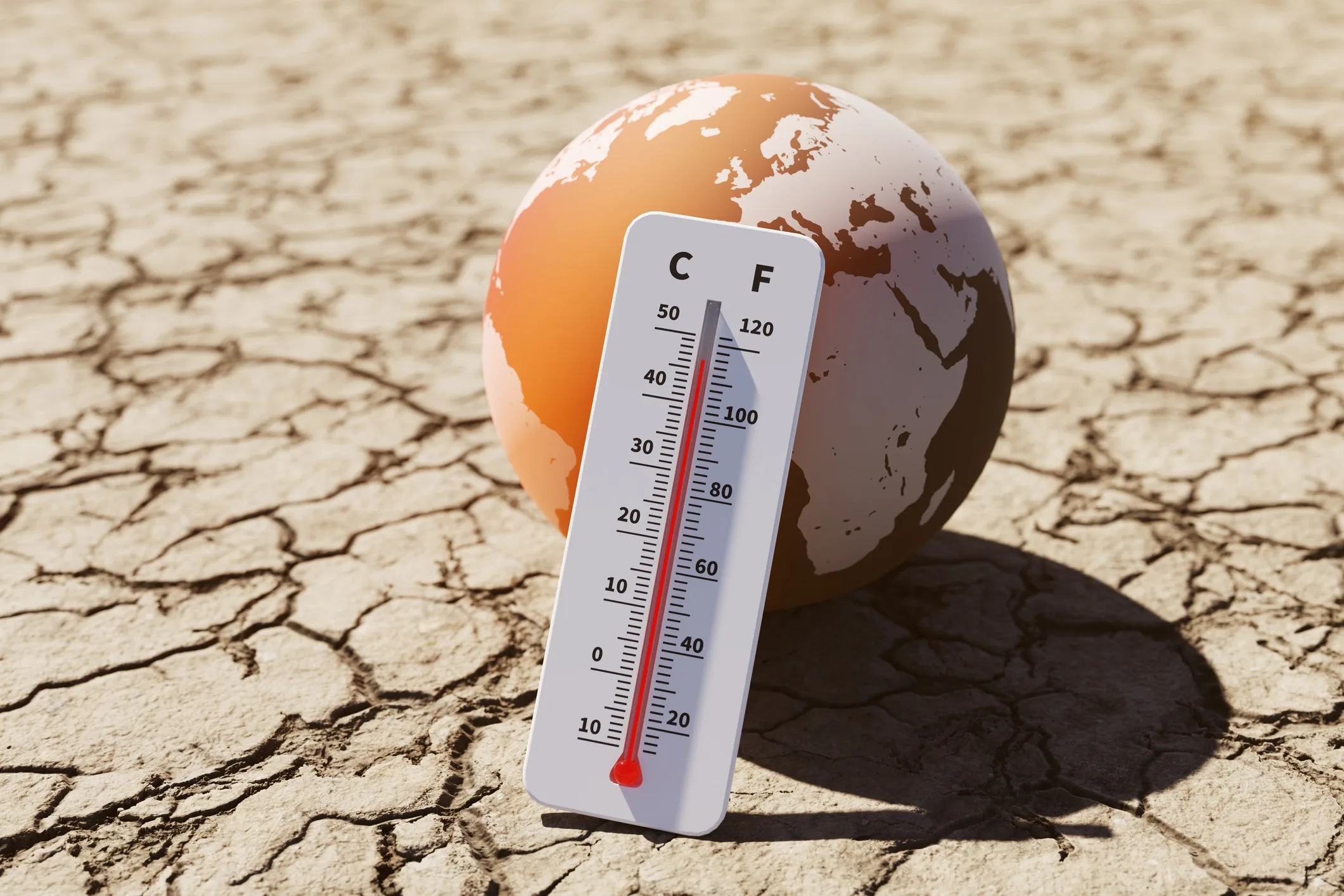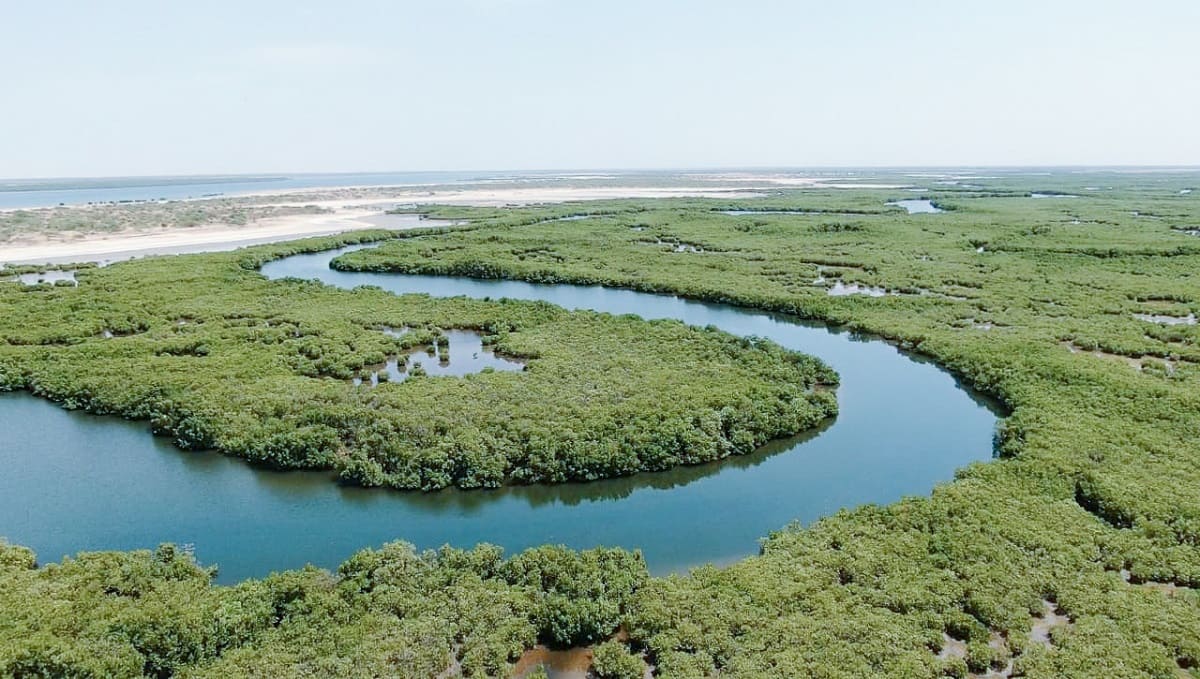Home>Weather and Climate>Chesapeake Bay Water Temperature: A Comprehensive Guide


Weather and Climate
Chesapeake Bay Water Temperature: A Comprehensive Guide
Modified: June 2, 2024
Discover the latest Chesapeake Bay water temperature trends and insights. Explore the impact of weather and climate on the bay's temperature. Gain valuable information for your next visit or research project.
(Many of the links in this article redirect to a specific reviewed product. Your purchase of these products through affiliate links helps to generate commission for Temperatures.com, at no extra cost. Learn more)
Table of Contents
- Understanding Chesapeake Bay Water Temperature
- Factors Affecting Chesapeake Bay Water Temperature
- Importance of Monitoring Chesapeake Bay Water Temperature
- Impact of Chesapeake Bay Water Temperature on Marine Life
- Human Activities and Chesapeake Bay Water Temperature
- Managing Chesapeake Bay Water Temperature for Conservation
Understanding Chesapeake Bay Water Temperature
The Chesapeake Bay, the largest estuary in the United States, experiences a dynamic range of water temperatures throughout the year. Understanding the fluctuations in Chesapeake Bay water temperature is crucial for various ecological and human-related activities. The water temperature in the Chesapeake Bay is influenced by a multitude of factors, including seasonal changes, weather patterns, and human activities.
During the summer months, the water temperature in the Chesapeake Bay tends to rise, creating warm surface waters that support the growth of phytoplankton and other aquatic organisms. Conversely, in the winter, the water temperature decreases, leading to cooler conditions that can impact the behavior and distribution of marine life.
The Chesapeake Bay's water temperature also plays a pivotal role in shaping weather patterns in the region. Warmer water temperatures can contribute to the intensification of tropical storms and hurricanes, while cooler temperatures may influence the formation of fog and other atmospheric phenomena.
Moreover, understanding the nuances of Chesapeake Bay water temperature is essential for various recreational and commercial activities. Boaters, anglers, and water sports enthusiasts rely on accurate water temperature data to plan their activities and ensure safety on the water.
In addition, researchers and scientists closely monitor Chesapeake Bay water temperature to assess the health of the ecosystem. Fluctuations in water temperature can impact the distribution and abundance of aquatic species, including iconic Chesapeake Bay inhabitants such as blue crabs, oysters, and striped bass.
By comprehensively understanding the intricacies of Chesapeake Bay water temperature, stakeholders can make informed decisions regarding resource management, conservation efforts, and sustainable development initiatives. This knowledge serves as a foundation for promoting the long-term health and resilience of the Chesapeake Bay ecosystem.
Understanding Chesapeake Bay water temperature is not merely an academic pursuit; it is a fundamental aspect of safeguarding the ecological balance and supporting the diverse array of life that thrives within this iconic estuarine environment.
Read more: Tampa Water Temperature Guide
Factors Affecting Chesapeake Bay Water Temperature
The water temperature in the Chesapeake Bay is subject to a myriad of influences, ranging from natural phenomena to human activities. Understanding these factors is essential for comprehending the complex dynamics of the bay's thermal profile.
Seasonal Variations
Seasonal changes exert a profound impact on Chesapeake Bay water temperature. During the summer months, the bay experiences elevated water temperatures, with surface waters often reaching their warmest levels. This seasonal warming is driven by solar radiation, which heats the surface layers of the water. Conversely, in the winter, the bay undergoes a cooling process, leading to a decrease in water temperature. These seasonal variations play a pivotal role in shaping the ecological processes and biological interactions within the Chesapeake Bay.
Solar Radiation
Solar radiation is a primary driver of water temperature in the Chesapeake Bay. The intensity and duration of sunlight directly influence the heating of the bay's surface waters. As solar radiation penetrates the water, it imparts thermal energy, leading to an increase in temperature. This phenomenon is particularly pronounced during the summer, when prolonged exposure to sunlight contributes to the warming of the bay's upper layers.
Tidal Fluctuations
Tidal movements play a significant role in modulating Chesapeake Bay water temperature. The ebb and flow of tides result in the mixing of warmer and cooler waters, influencing the overall thermal regime of the bay. Tidal fluctuations also impact the distribution of heat within the water column, contributing to the dynamic nature of Chesapeake Bay's temperature profile.
Read more: Monthly Destin Water Temperature Guide
Weather Patterns
Weather patterns, including air temperature, wind speed, and atmospheric pressure, have a direct impact on Chesapeake Bay water temperature. Variations in air temperature can influence the heat exchange between the atmosphere and the water, leading to changes in water temperature. Wind speed and direction can affect the mixing of surface waters, contributing to the redistribution of thermal energy within the bay. Additionally, atmospheric pressure patterns can influence the density and circulation of water in the Chesapeake Bay, further impacting its temperature dynamics.
Human Activities
Human activities, such as urbanization, industrial processes, and agricultural practices, can also affect Chesapeake Bay water temperature. Runoff from urban and agricultural areas can introduce excess nutrients and pollutants into the bay, potentially altering its thermal characteristics. Furthermore, the discharge of heated effluents from industrial facilities can contribute to localized increases in water temperature, impacting the surrounding aquatic environment.
Climate Change
The overarching influence of climate change cannot be overlooked when considering factors affecting Chesapeake Bay water temperature. Long-term shifts in global climate patterns can lead to alterations in the bay's thermal regime, with potential implications for marine life, ecosystem dynamics, and human interactions with the environment.
By recognizing and comprehensively understanding these factors, stakeholders can gain valuable insights into the intricate interplay of forces that shape Chesapeake Bay water temperature. This knowledge forms the foundation for informed decision-making, conservation efforts, and sustainable management practices aimed at preserving the ecological integrity of this iconic estuarine ecosystem.
Importance of Monitoring Chesapeake Bay Water Temperature
Monitoring Chesapeake Bay water temperature holds immense significance due to its far-reaching implications for ecological health, human activities, and the overall well-being of the bay's diverse ecosystem. The practice of systematically tracking and analyzing water temperature data serves as a linchpin for informed decision-making, scientific research, and conservation efforts aimed at preserving the delicate balance of this iconic estuarine environment.
Read more: James River Water Temperature: A Guide To The Current Water Temperature Of The James River
Ecological Insights
Monitoring Chesapeake Bay water temperature provides invaluable insights into the ecological dynamics of this complex ecosystem. Fluctuations in water temperature directly influence the behavior, distribution, and abundance of aquatic species, including commercially and ecologically important organisms such as blue crabs, oysters, and various fish species. By closely monitoring water temperature, researchers and resource managers can gain a deeper understanding of the thermal preferences of different species, identify potential habitat shifts, and assess the impact of temperature variations on reproductive cycles and overall population dynamics.
Climate and Weather Patterns
The monitoring of Chesapeake Bay water temperature plays a pivotal role in understanding regional climate and weather patterns. Changes in water temperature can influence atmospheric conditions, including the formation of fog, the intensity of precipitation events, and the modulation of local microclimates. By integrating water temperature data into climate models and weather forecasting systems, scientists can enhance their ability to predict and respond to meteorological phenomena, ultimately contributing to improved safety and preparedness for coastal communities and maritime activities.
Human Activities and Resource Management
For stakeholders engaged in recreational and commercial activities within the Chesapeake Bay, monitoring water temperature is essential for ensuring safety, optimizing resource utilization, and promoting sustainable practices. Boaters, anglers, and water sports enthusiasts rely on accurate water temperature information to plan their activities, navigate potential hazards, and maximize their overall experience on the water. Furthermore, resource managers utilize water temperature data to inform fisheries management strategies, assess the health of aquatic habitats, and implement measures to mitigate the impact of temperature-related stressors on marine life.
Conservation and Restoration Efforts
In the realm of conservation and restoration, monitoring Chesapeake Bay water temperature serves as a fundamental tool for evaluating the effectiveness of ecosystem management initiatives and identifying areas of concern. By tracking long-term temperature trends and assessing the impact of temperature anomalies on the bay's ecological integrity, conservation practitioners can adapt their strategies to address emerging challenges and prioritize conservation actions that support the resilience of the ecosystem.
In essence, the importance of monitoring Chesapeake Bay water temperature cannot be overstated. It serves as a cornerstone for fostering a deeper understanding of ecological processes, safeguarding human activities, and guiding conservation endeavors aimed at preserving the natural heritage of the Chesapeake Bay. Through the continuous and vigilant monitoring of water temperature, stakeholders can proactively respond to environmental changes, promote sustainable practices, and uphold the ecological vibrancy of this iconic estuarine environment.
Read more: Rehoboth Beach Water Temperature Guide
Impact of Chesapeake Bay Water Temperature on Marine Life
The water temperature of the Chesapeake Bay exerts a profound influence on the diverse array of marine life that inhabits its waters. Fluctuations in water temperature can trigger a cascade of effects, shaping the behavior, distribution, and overall well-being of aquatic species within this iconic estuarine environment.
Behavioral Adaptations
The temperature of the water directly impacts the behavior of marine organisms. Many species exhibit specific thermal preferences, seeking out areas with optimal water temperatures for essential activities such as feeding, reproduction, and shelter. For example, the migration patterns of iconic Chesapeake Bay species, including blue crabs and striped bass, are intricately linked to water temperature variations. As the bay experiences seasonal changes in temperature, these species respond by adjusting their movements and habitat utilization, highlighting the critical role of water temperature in shaping their behavioral adaptations.
Reproductive Cycles
Water temperature plays a pivotal role in regulating the reproductive cycles of marine organisms. Many species rely on specific temperature thresholds to initiate spawning and larval development. Fluctuations in water temperature can disrupt these critical reproductive processes, potentially impacting the abundance and recruitment of key species within the Chesapeake Bay. For instance, the timing of oyster spawning events is intricately tied to water temperature, with deviations from optimal thermal conditions potentially affecting the success of larval settlement and subsequent population dynamics.
Habitat Distribution
The distribution of marine habitats within the Chesapeake Bay is intricately linked to water temperature gradients. Certain species exhibit preferences for specific temperature ranges, leading to the formation of thermal refuges and niche habitats within the bay. As water temperature fluctuates, the spatial distribution of these habitats may shift, influencing the interactions between different species and the overall structure of the ecosystem. Additionally, temperature-related changes in habitat distribution can impact the availability of suitable foraging grounds and shelter, ultimately shaping the ecological dynamics of the bay.
Read more: Australian Water Temperature Guide
Physiological Stress
Extreme deviations from optimal water temperatures can induce physiological stress in marine organisms. Temperature stress can compromise vital biological functions, leading to reduced growth rates, impaired immune responses, and increased susceptibility to disease. Prolonged exposure to unfavorable water temperatures can exert cumulative effects on the health and resilience of marine species, potentially influencing population dynamics and ecosystem stability.
Ecosystem Interactions
The impact of Chesapeake Bay water temperature on marine life extends beyond individual species, influencing broader ecosystem interactions. Changes in water temperature can alter the timing and magnitude of biological interactions, including predator-prey relationships, competitive dynamics, and trophic cascades. These shifts in ecosystem interactions can have far-reaching implications for the overall structure and function of the Chesapeake Bay ecosystem, underscoring the interconnected nature of temperature-driven effects on marine life.
In essence, the impact of Chesapeake Bay water temperature on marine life is multifaceted, encompassing behavioral, physiological, and ecological dimensions. By recognizing the intricate interplay between water temperature and marine organisms, stakeholders can gain a deeper appreciation for the complex dynamics of this iconic estuarine environment and implement targeted measures to support the resilience and sustainability of the bay's diverse marine life.
Human Activities and Chesapeake Bay Water Temperature
Human activities exert a significant influence on the water temperature of the Chesapeake Bay, contributing to a complex interplay of environmental factors that shape the thermal dynamics of this iconic estuarine ecosystem. From urbanization and industrial processes to agricultural practices and recreational pursuits, human interventions have tangible implications for the temperature profile of the bay, with potential ramifications for marine life and ecological processes.
Urbanization and the associated development of impervious surfaces, such as roads, parking lots, and rooftops, can lead to increased stormwater runoff into the Chesapeake Bay. This influx of runoff can elevate water temperatures, particularly during periods of intense heat, as urban surfaces absorb and retain heat, subsequently transferring it to the surrounding water bodies. The resulting urban heat island effect can contribute to localized warming of the bay's waters, influencing thermal gradients and potentially impacting the distribution of aquatic species.
Industrial activities also play a role in shaping Chesapeake Bay water temperature. The discharge of heated effluents from industrial facilities can introduce elevated temperatures into the bay, creating thermal plumes that may disrupt natural temperature gradients and affect the behavior and habitat utilization of marine organisms. Additionally, industrial processes that rely on water for cooling purposes can lead to the release of warmed water back into the bay, contributing to localized increases in water temperature.
Agricultural practices, particularly those associated with livestock operations and crop cultivation, can indirectly influence Chesapeake Bay water temperature through nutrient runoff and sedimentation. Excess nutrients and sediments entering the bay can fuel algal blooms, which, in turn, can alter water temperature dynamics through the modification of light penetration and the consumption of dissolved oxygen. These changes in water quality can have cascading effects on the thermal characteristics of the bay, impacting the suitability of habitats for various aquatic species.
Furthermore, recreational activities, such as boating, fishing, and water sports, can contribute to the alteration of Chesapeake Bay water temperature. The operation of motorized watercraft and the discharge of untreated ballast water can introduce heat and non-native species into the bay, potentially disrupting the natural thermal balance and ecological equilibrium. Additionally, the extraction of water for recreational purposes, coupled with the release of waste and debris, can influence local temperature gradients and water quality parameters.
In essence, human activities intersect with Chesapeake Bay water temperature in multifaceted ways, underscoring the need for sustainable practices and proactive measures to mitigate potential impacts. By recognizing the intricate connections between human interventions and water temperature dynamics, stakeholders can work towards fostering a harmonious coexistence between human activities and the ecological integrity of the Chesapeake Bay.
Managing Chesapeake Bay Water Temperature for Conservation
Managing Chesapeake Bay water temperature for conservation entails a comprehensive approach aimed at preserving the ecological balance and promoting the long-term sustainability of this iconic estuarine environment. By implementing targeted strategies and collaborative initiatives, stakeholders can proactively address the challenges posed by fluctuating water temperatures and contribute to the conservation of the bay's diverse marine life and habitats.
Read more: Cozumel Water Temperature: Monthly Guide
Ecosystem-Based Management
Adopting an ecosystem-based management approach is fundamental to managing Chesapeake Bay water temperature for conservation. This entails considering the interconnectedness of ecological processes and the cumulative impacts of temperature-related stressors on marine life. By integrating water temperature considerations into broader ecosystem management frameworks, conservation practitioners can develop adaptive strategies that prioritize the resilience and functionality of the bay's diverse habitats and species.
Sustainable Land Use Practices
Promoting sustainable land use practices is essential for mitigating the impact of human activities on Chesapeake Bay water temperature. Implementing green infrastructure initiatives, enhancing stormwater management, and minimizing impervious surfaces can help reduce the urban heat island effect and limit the influx of heated runoff into the bay. Furthermore, fostering responsible agricultural practices and promoting soil conservation measures can contribute to improved water quality and temperature regulation within the bay's watershed.
Habitat Restoration and Protection
Investing in habitat restoration and protection efforts plays a pivotal role in managing Chesapeake Bay water temperature for conservation. Restoring critical habitats, such as wetlands and oyster reefs, can enhance the bay's resilience to temperature fluctuations and provide refuge for species impacted by thermal stress. Additionally, establishing marine protected areas and implementing habitat conservation measures can safeguard essential thermal refuges and promote the stability of temperature-sensitive ecosystems.
Climate Resilience and Adaptation
Building climate resilience and adaptation capacity is integral to managing Chesapeake Bay water temperature for conservation in the face of climate change. By incorporating climate projections and temperature modeling into conservation planning, stakeholders can anticipate future temperature trends and implement adaptive measures to mitigate the potential impacts on marine life. This proactive approach can enhance the bay's ability to withstand temperature-related challenges and support the persistence of its ecological communities.
Collaborative Monitoring and Research
Facilitating collaborative monitoring and research initiatives is crucial for gaining a deeper understanding of Chesapeake Bay water temperature dynamics and informing conservation strategies. By fostering partnerships between scientists, resource managers, and local communities, stakeholders can collect comprehensive water temperature data, assess its implications for marine life, and develop evidence-based conservation interventions. This collaborative approach fosters a shared commitment to preserving the bay's ecological integrity and supports informed decision-making.
In essence, managing Chesapeake Bay water temperature for conservation requires a holistic and proactive stance that integrates ecological, social, and scientific considerations. By embracing sustainable practices, prioritizing habitat protection, and fostering collaborative stewardship, stakeholders can contribute to the preservation of this iconic estuarine environment and uphold its ecological vibrancy for future generations.









